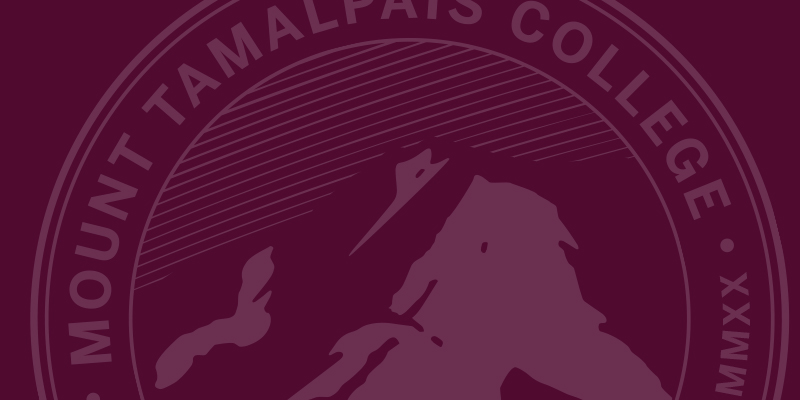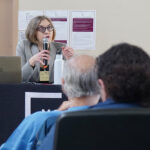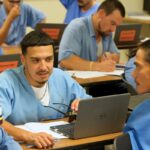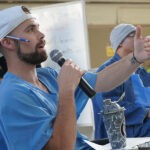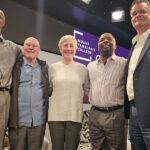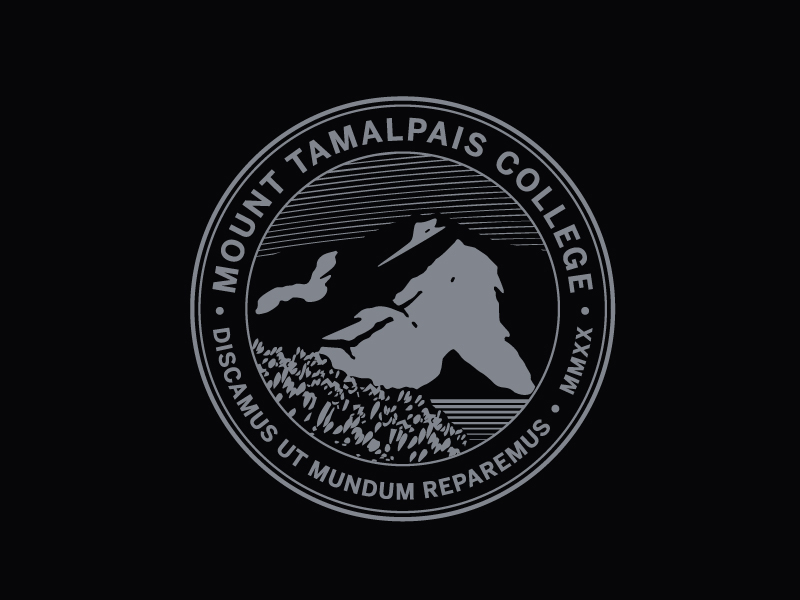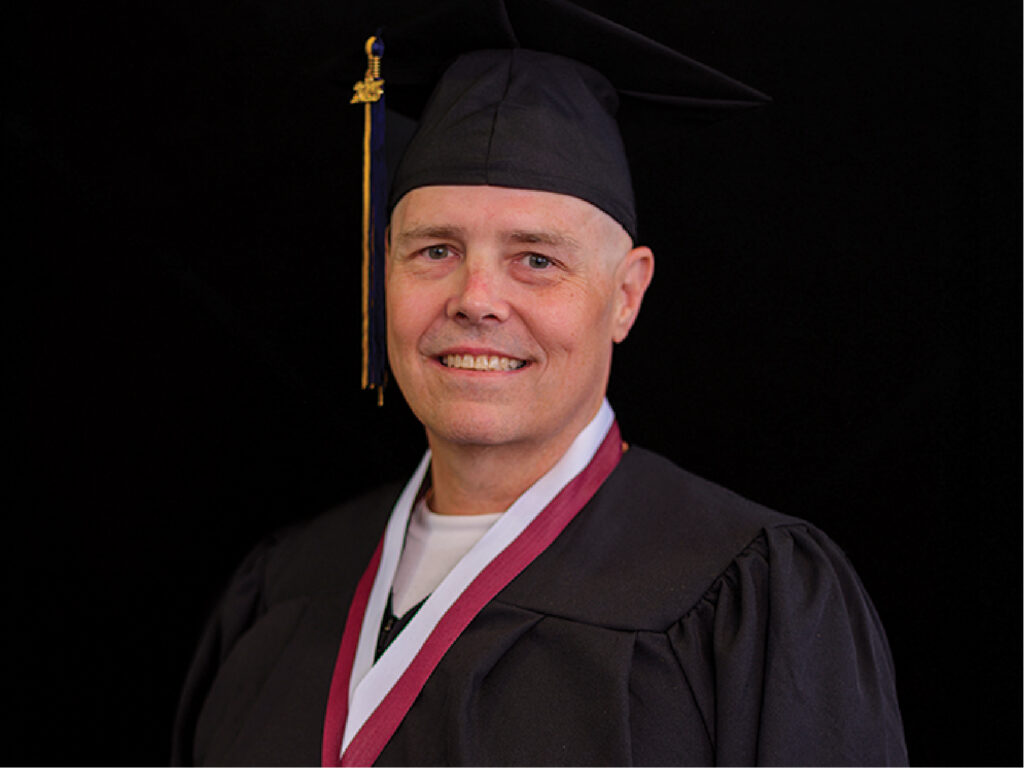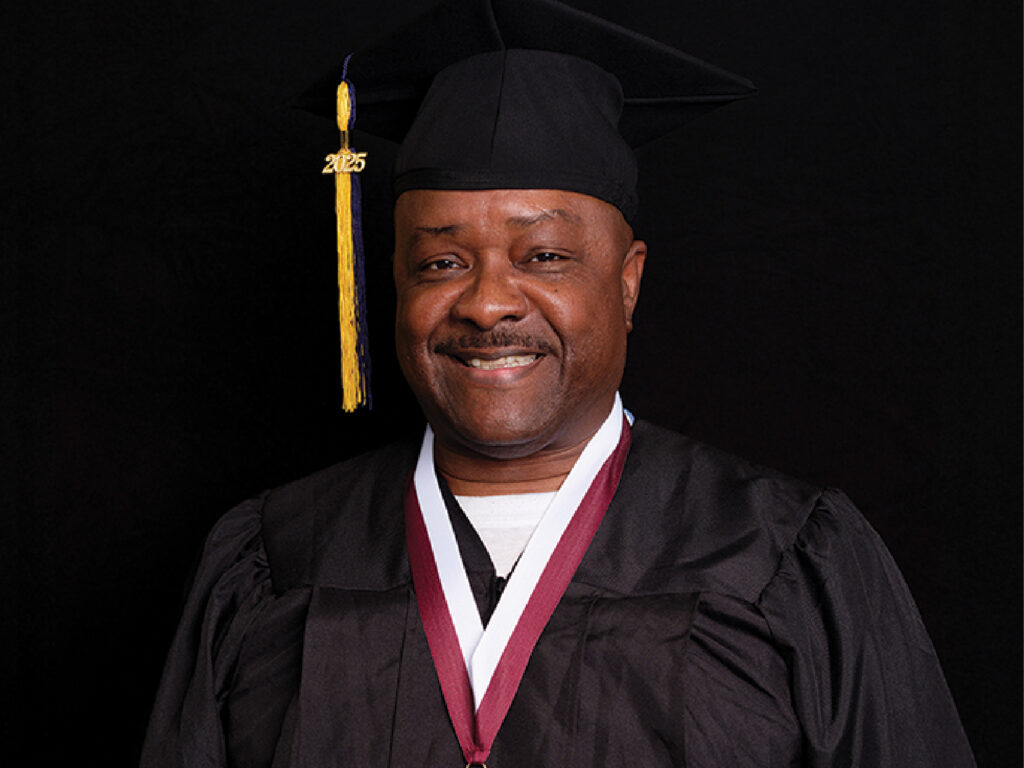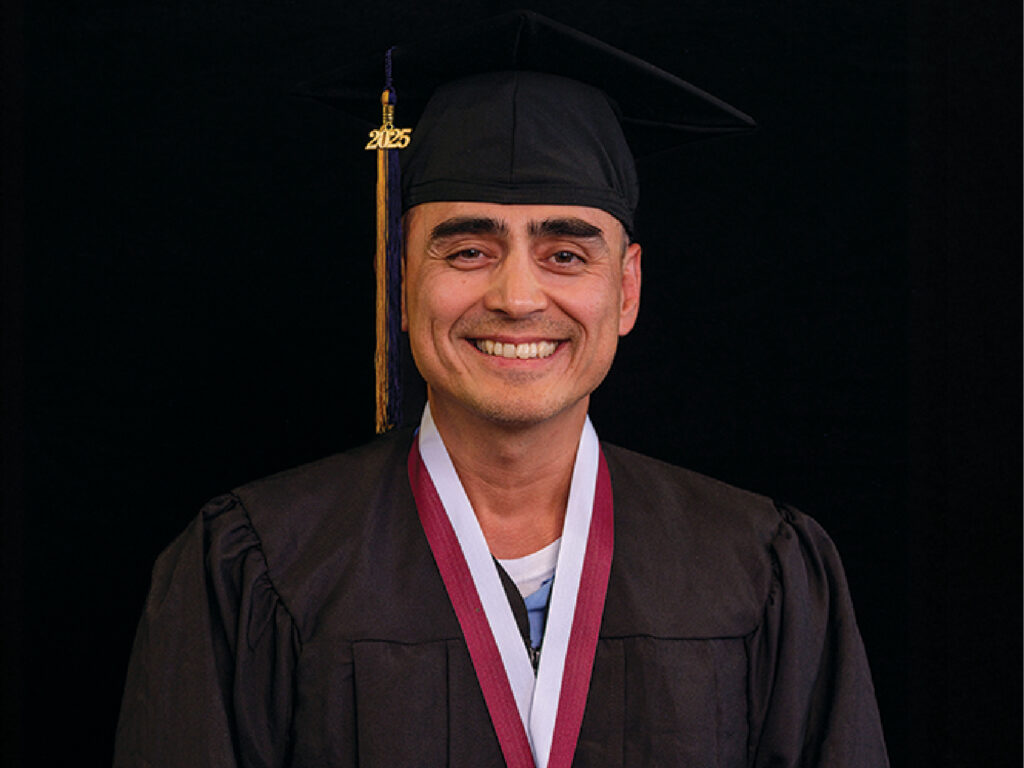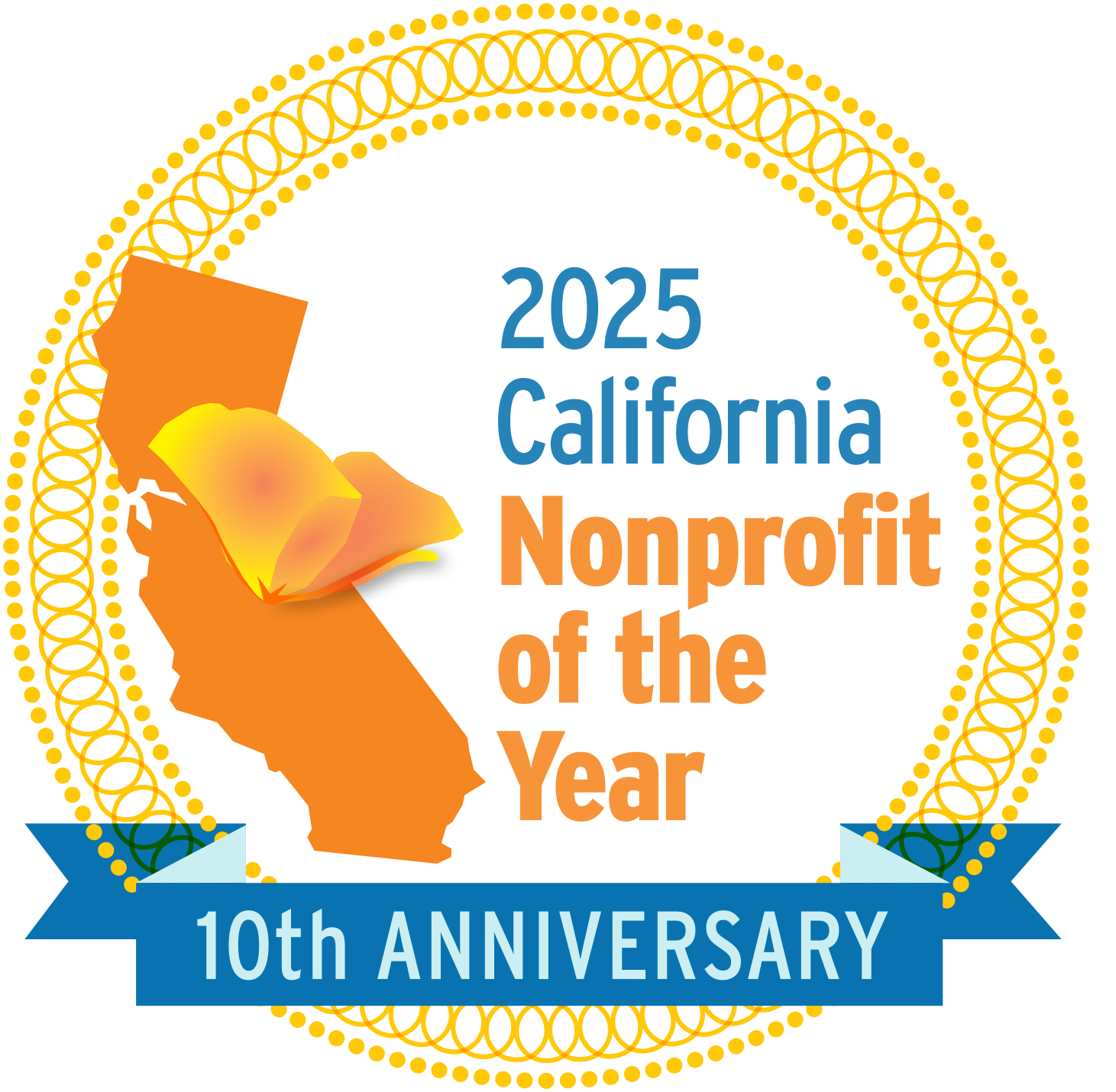Dear friends,
I hope everyone is doing OK during this tumultuous and trying time. I’m writing to share some brief updates on San Quentin, as well as some longer thoughts about the road ahead, now that we have achieved the historic milestone of becoming Mount Tamalpais College. (Note that “Tamalpais” is pronounced “Tamal PIE iss”.) Making such a profound change in the midst of a pandemic has presented some formidable challenges, but we are finding our way, even locating meaningful opportunities within this period of extraordinary change.
Larger picture at San Quentin: the COVID-19 outbreak there has largely subsided. As of Sunday, October 11, there was one current positive case; 2,152 resolved. So far 28 people at San Quentin have died of the virus. As always, the numbers don’t convey either the physical toll or the enormous psychological impact of the prolonged lockdown—now going on month eight. It’s difficult to describe the frustration of not being able to do more to intervene in this situation, though I know many of you are experiencing it as well.
As you know, at the start of the pandemic we made the judgment call to focus our attention and resources on protecting the mental and physical health of everyone inside, including both incarcerated people and staff, and to help stabilize the prison itself. Given the state of crisis of the prison, including the precarious state of the institutional mail systems, as well as the near-impossibility of delivering high-quality education via course packets, we opted not to try to continue instruction by correspondence. We have, however, worked to ensure that people inside at least have reading and writing materials, as well as quality video content. We also continue to explore the feasibility of creating technological systems to deliver quality courses without face-to-face contact. Even once we have the appropriate systems, equipment, funding, and institutional cooperation, such technology-based strategies will take time to implement, but we hope to make significant progress in the coming months.
All of these strategic decisions reflect our interpretation of our mission. They form our response to the question, what is the role of a higher education institution in the face of a pandemic? Our answer has been to deploy our knowledge, resources, relationships, and experience strategically, to ensure the safety and wellbeing of the most vulnerable members of our community.
As the lockdown drags on, we continually reassess our decisions, like everyone else constantly trying to anticipate the future, while weighing the nature and intensity of the crisis, our organizational capacity, the capacity of the prison, as well as the availability of resources. There is obviously no playbook for this situation.
As we work on these formidable human, material, and logistical challenges, we are also eager to turn attention to some of the other “higher level” projects that will be critical to shaping and sustaining the new Mount Tamalpais College, and advancing through the final initial accreditation stage. In the next year, we anticipate hiring several new positions as we build out our administrative infrastructure. The work of attracting a highly skilled, diverse pool of candidates with relevant professional experience and expertise will be one of our most significant priorities. We will be posting these positions soon and hope that all of you will assist by disseminating these announcements throughout your own networks, and also sharing suggestions for getting the word out.
Another major priority remains diversifying faculty. Some of the obstacles to this goal are fairly obvious: the demographics of those holding advanced degrees in the U.S., as well as those of the Bay Area, are almost the inverse of our student population. Yet recruitment is not just about demographics: individuals’ feelings about, and experiences of, teaching inside vary dramatically. Precisely what makes some individuals most needed can also be what makes the experience of teaching that much more intense. The emotional labor of teaching in a prison is by no means constant, but rather varies dramatically based on myriad often deeply personal factors, including race, gender identity, socioeconomic background, as well as experience with the criminal justice system. What for a person with one background might seem like a novelty—teaching in a prison—for another person might be deeply fraught.
In addition, Black and Latino academics and professionals in particular are constantly being called upon to provide volunteer service, especially for institutions and organizations that serve communities of color. This is one of the most important reasons why the feasibility of transitioning from a volunteer model to paid faculty is something we are now exploring. We are also constantly seeking to understand how the program can better support faculty of color. Nevertheless, the sharp contrast between the racial, ethnic, and class backgrounds of students and those of faculty and staff—which essentially illustrates inequality in the U.S.—remains one of the most persistent and intractable challenges of the field.
Another compelling realm of work in the process of building out the new institution is establishing community norms, pedagogical practices, and administrative standards that honor the cultural, political, and intellectual diversity of our entire community. One of the most complex challenges within the field of higher education in prison is the contrast between the socioeconomic, cultural, and political diversity of the incarcerated population, and program staff and educators’ often more homogenous cultural and political backgrounds. Staff and educators at times approach incarcerated students with strong beliefs about who they are or what they need, which can potentially deprive them of the space that they, like all students, need to think independently and critically, and to develop their own thoughts, ideas, identities, and perspectives.
For better and for worse, the prison is a study in what happens when human beings are systematically deprived of all formal power—when, as is often the case in prison settings, conflict and aggression have a swift and harsh price, and people have no choice but to coexist. One surprising result of this landscape is often a capacity for imagining and engaging with diverse viewpoints that is increasingly rare in the non-incarcerated world. In this sense, a liberal arts college located within a state prison would seem to have an obligation to honor that strength by engaging deeply with the notion not just of intellectual freedom, but even more fundamentally, with the notion that every human being deserves safety and dignity, no matter how radically incomprehensible, repulsive, or threatening they may appear to others. We intend to build a model for higher education that engages seriously with these questions, and that we hope will be worthy of emulation by institutions and communities far beyond the prison.
This is, finally, one of the most compelling aspects of the entire enterprise of Mount Tamalpais College. Higher education itself contains an infinite multitude of tensions, contradictions, and possibilities: it perpetuates social stratification and inequality, and yet its capacity to overcome marginalization and exclusion is unparalleled. Many of academia’s norms and conventions systematically diminish, even erase, entire communities and cultures, yet its tools and practices often possess an extraordinary capacity to elevate and protect human value. Students arrive with profound knowledge and wisdom, and they also need teachers and administrators with the commitment, expertise, and confidence to provide structure and assert standards. Expertise as a concept may contain all kinds of hubris and oblivion, and yet without it, as a society we are surely doomed.
In spite of its tremendous complexity, higher education harbors within it knowledge, resources, tools, practices, and strategies that hold the power to transform individual lives, communities, and society as a whole. Thus, we intend to critically examine, reclaim, and deploy it for the public good. Our hope is that long into the future, Mount Tamalpais College will continue to become a place where students, faculty, staff, administrators, and the community at large can encounter people and ideas from worlds away; approach complex questions with curiosity, patience, humility, mutual respect, and an appreciation for nuance; and where everyone can genuinely thrive. Even in the midst of the profound uncertainties the world currently faces, we are convinced that this work plays a part in repairing the world. We are grateful to have you, our community, along with us on this path.
With warm regards,
Jody Lewen
